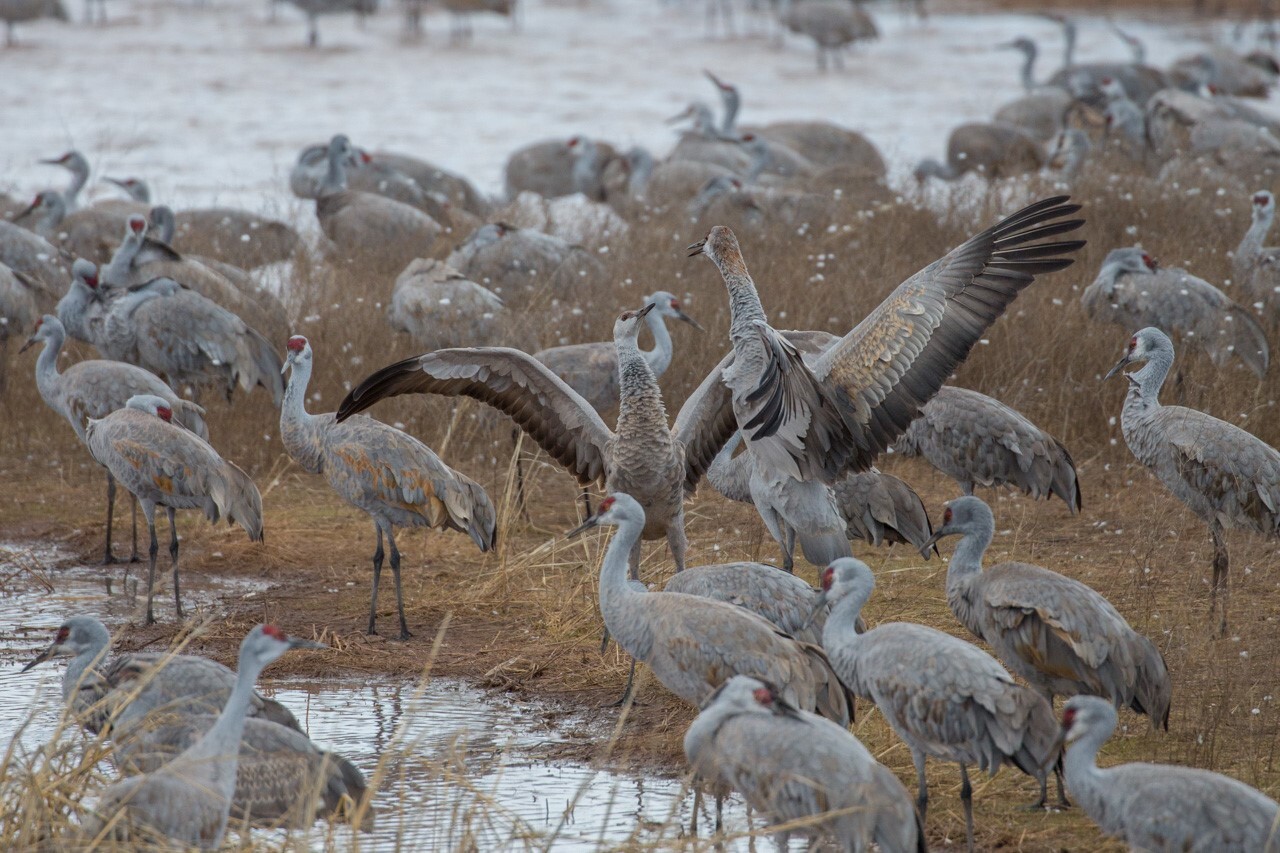WILLCOX, Ariz. (KGUN) — Winter brings a lot of visitors to southern Arizona. They escape the snow and cold to soak up the sun.
People are not the only snow birds, there are actual birds as well, like the migratory Sandhill Cranes.
There's no mistaking the sounds of these are Sandhill Cranes.
If you are in Cochise County, especially south of Willcox, you will hear and see them.
This winter, they are here in record numbers.
"47,601 it's a huge number," said Homer Hansen, Chairman of Wings Over Willcox Birding & Nature Festival. "But we always do have tens of thousands here. The average is around 35, 38 thousand. So it's a big number above that as far as a record goes."
Hansen has been helping Arizona Game and Fish with its annual count of Sandhill Cranes for the last 20 years.
He attributes the record number of these winter visitors to conservation efforts by Game and Fish. He also points to the habits of the Sandhill Crane.
"We have the cranes concentrating very close to the water bodies," explained Hansen. "That's where we focus our counting."

You will find those water bodies, filled with Sandhill Cranes, throughout the Sulphur Springs Valley around Willcox.
Nearly 18,000 cranes have been counted in the Willcox Playa area, just south of Willcox.
But the largest concentration of Sandhill Cranes, almost 25,000, is in the Whitewater Draw Wildlife Area. That is further south near McNeal.
Hansen runs the annual Wings Over Willcox event in mid-January, which highlighting these rather prehistoric-looking birds.
As a native of Willcox, Hansen is the local expert.

"They mate for life," said Hansen. "They live for a very long time, 20 to 30 years. They have courtship and dancing rituals. When you watch them, they're big birds. They're big and fun to watch. They have a lot of personality."
Sandhill Cranes use the protection of the water at night. Once the sun comes up, they're off.

"Right around sunrise, it's very consistent, you can see the sun just crest the hill. Then they start peeling off and heading out to the fields and orchards and grasslands to start feeding. Then once they're relatively full, which is usually around noon, one, two o'clock in the afternoon, they return to their roosting areas."
If you're not into sunrise bird watching, early afternoon is another popular time to view the Sandhill Crane.
These birds migrate to southeast Arizona arriving as early as late September.
"The subspecies that we have here, the Lessers, mostly are in Canada, into Alaska, all the way into Siberia."
Siberia, no wonder they fly south to Willcox for the winter.
Like their human counterparts, these winter visitors can be seen through the beginning of March.

Hansen says he's hopeful about the future of the Sandhill Cranes, based on the record numbers this winter. He does have one primary concern.
"Management of water resources is probably one of the most important things we can do," said Hansen. "That's an issue that we're well aware of in southeast Arizona."
Sandhill Cranes are one of the oldest birds, with fossils dating back more than 2.5 million years.





